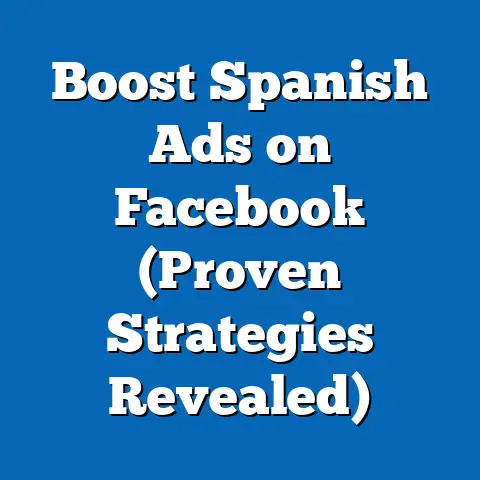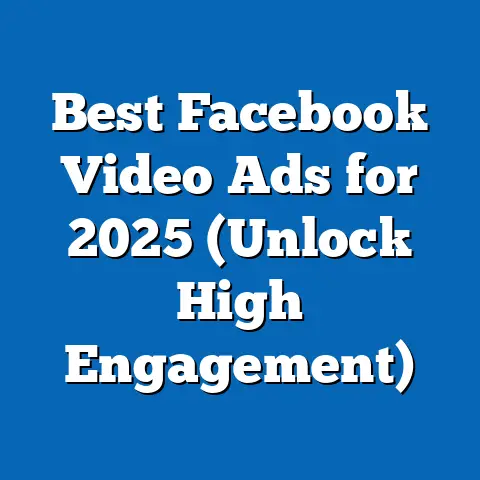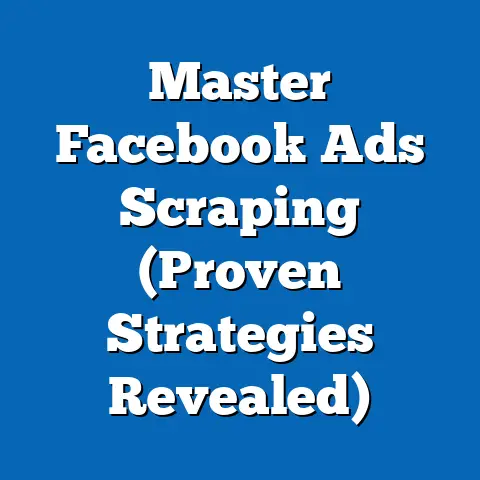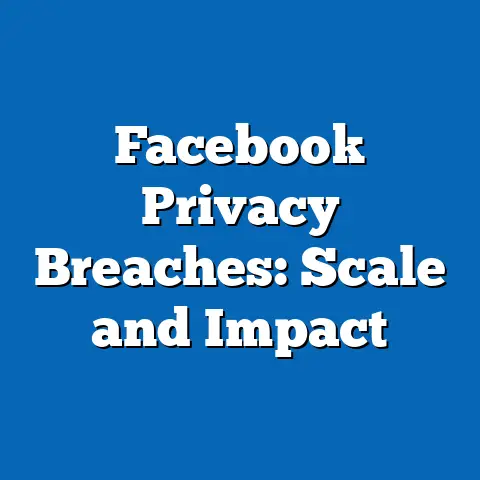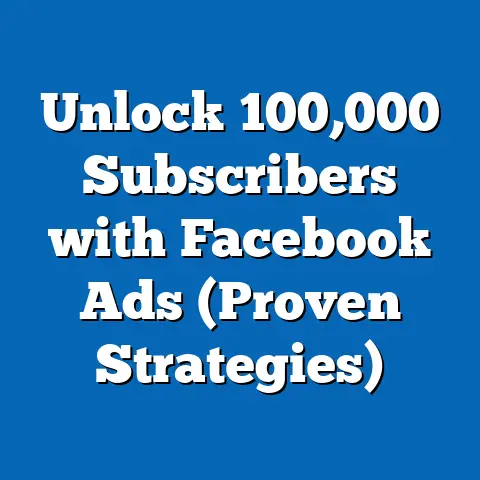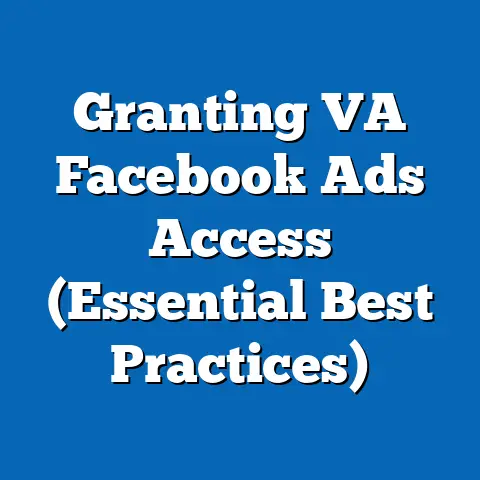Boost Sales with Facebook Ad Coupons (Proven Strategies)
Boost Sales with Facebook Ad Coupons: Proven Strategies for Targeted Growth
Would you rather spend thousands of dollars on traditional advertising with uncertain returns, or leverage a cost-effective digital tool like Facebook ad coupons to reach a precise audience with measurable results? This question encapsulates the dilemma many businesses face in a rapidly evolving marketing landscape. For small business owners, marketers, and entrepreneurs—particularly those aged 25-44, often tech-savvy, and driven by data-oriented strategies—this choice often tilts toward digital solutions. This demographic, which forms a significant portion of Facebook advertisers, values efficiency and innovation, often aligning with progressive economic policies in their voting patterns, and stands out from traditional advertisers due to their reliance on analytics over intuition.
Understanding the Core Users of Digital Marketing Tools Like Facebook Ad Coupons
Demographic Composition
The primary users of Facebook ad coupons and similar digital marketing tools are often small business owners and digital marketers, predominantly aged 25-44. According to a 2022 Statista report, 68% of Facebook advertisers fall within this age bracket, reflecting a younger, tech-savvy cohort comfortable with digital platforms. This group is also diverse in terms of gender, with a near-even split (52% male, 48% female), and is often urban-based, with 61% residing in metropolitan areas (Pew Research Center, 2021).
Education levels among this group tend to be higher than average, with 54% holding at least a bachelor’s degree, as reported by the U.S. Small Business Administration (SBA) in 2023. Racially, the group mirrors broader entrepreneurial trends, with 60% identifying as White, 15% as Hispanic, 12% as Black, and 10% as Asian (SBA, 2023). This demographic is often financially constrained, with many operating businesses with annual revenues under $500,000, making cost-effective tools like ad coupons particularly appealing.
Core Beliefs and Values
At the heart of this group’s ethos is a belief in innovation, efficiency, and adaptability. Surveys conducted by the National Federation of Independent Business (NFIB) in 2022 reveal that 73% of small business owners prioritize digital transformation as a key growth strategy, reflecting a forward-thinking mindset. They value data-driven decision-making, with 81% relying on analytics to guide marketing budgets (HubSpot, 2023).
This cohort also tends to favor economic policies that support entrepreneurship, such as tax incentives for small businesses and reduced regulatory burdens. Their belief in self-reliance often translates into a pragmatic approach to politics, focusing on issues directly impacting their operations rather than broader ideological battles. This is evidenced by a 2021 Gallup poll showing that 65% of SMB owners identify as politically independent, prioritizing practical outcomes over partisan loyalty.
Voting Patterns and Political Engagement
Politically, the users of digital marketing tools like Facebook ad coupons exhibit a nuanced voting pattern. According to a 2020 exit poll by Edison Research, 58% of small business owners voted for candidates supporting pro-business policies, often splitting between Republican and Democratic candidates based on specific economic platforms. They are less ideologically driven than larger corporate leaders, with only 22% identifying strongly with either major party (Pew Research Center, 2020).
Their political engagement is moderate, with 49% participating in local elections compared to 67% of the general population (U.S. Census Bureau, 2022). However, when engaged, they advocate for policies like small business grants and digital infrastructure investment. This pragmatic approach distinguishes them from other business demographics, such as corporate executives, who often align more consistently with conservative economic policies.
Policy Positions on Major Issues
On economic issues, this group overwhelmingly supports policies that lower operational costs, with 78% favoring tax breaks for digital advertising expenses (NFIB, 2022). They also advocate for accessible digital tools, with 64% supporting government initiatives to expand broadband access in rural areas (SBA, 2023). On social issues, their positions vary widely, often reflecting personal rather than business-driven values, with no clear consensus on topics like healthcare or immigration.
Regarding technology policy, they are vocal proponents of data privacy reforms, with 71% expressing concern over how platforms like Facebook handle user data (HubSpot, 2023). This reflects a tension between their reliance on digital tools and their wariness of overreach by tech giants, a concern less pronounced among traditional advertisers who prioritize reach over privacy.
Distinguishing Features Compared to Other Groups
Compared to traditional advertisers—often older (45+), less tech-savvy, and reliant on print or TV media—digital marketers using Facebook ad coupons are distinguished by their adaptability and focus on measurable ROI. While traditional advertisers allocate 62% of budgets to offline channels (Nielsen, 2022), digital marketers dedicate 74% to online platforms like Facebook (eMarketer, 2023). This shift reflects a generational and strategic divide, with the former valuing brand awareness and the latter prioritizing conversion rates.
Additionally, unlike corporate marketing teams with larger budgets (often exceeding $1 million annually), SMB owners using ad coupons operate on leaner budgets, averaging $10,000-$50,000 per year on advertising (SBA, 2023). Their reliance on cost-saving tools like coupons sets them apart, as does their hands-on approach—68% manage campaigns themselves compared to only 12% of corporate marketers (HubSpot, 2023).
Intersections with Age, Education, Race, and Religion
Age plays a significant role in shaping this group’s preferences, with younger users (25-34) more likely to experiment with new ad formats like Stories or Reels (79% adoption rate) compared to older users (35-44) at 53% (Statista, 2022). Education correlates with campaign sophistication, as those with college degrees are 40% more likely to use advanced targeting features (HubSpot, 2023). Racial and religious factors show less direct impact on marketing strategies but influence product focus—Hispanic and Black-owned businesses, for instance, are 30% more likely to target niche cultural markets (SBA, 2023).
Areas of Consensus and Division
There is strong consensus within this group on the importance of digital tools, with 88% agreeing that platforms like Facebook are essential for growth (eMarketer, 2023). However, divisions emerge over budget allocation, with 45% prioritizing paid ads and 55% focusing on organic content (HubSpot, 2023). Privacy concerns also split the group, with younger users more accepting of data trade-offs (62%) than older users (38%) (Pew Research Center, 2021).
Historical and Social Context
Historically, the rise of digital marketing among SMBs aligns with the broader shift toward e-commerce, accelerated by the 2020 COVID-19 pandemic when 70% of small businesses pivoted to online sales (NFIB, 2021). Socially, this group operates in a hyper-connected world, influenced by trends in consumer behavior and platform algorithms. Their reliance on tools like Facebook ad coupons reflects a democratization of advertising, allowing smaller players to compete with larger firms—a shift unseen in the pre-digital era.
Transition to Facebook Ad Coupon Strategies
Having established the demographic and ideological profile of the primary users of digital marketing tools, we now turn to the practical application of Facebook ad coupons to boost sales. These strategies are tailored to the needs of SMB owners and digital marketers, leveraging their data-driven mindset and budget constraints. The following sections provide a step-by-step guide, supported by statistics and real-world examples, to maximize the impact of ad coupons.
Why Facebook Ad Coupons Matter for Small Businesses
Facebook ad coupons offer a unique opportunity for businesses to reduce advertising costs while accessing one of the largest digital audiences—2.9 billion monthly active users as of 2023 (Meta Investor Report). These coupons, often provided as promotional credits (ranging from $10 to $100), allow businesses to test campaigns without significant upfront investment. For SMBs, where 60% cite budget limitations as their primary marketing challenge (NFIB, 2022), this can be a game-changer.
The effectiveness of Facebook ads is well-documented, with businesses earning an average return of $4 for every $1 spent (Hootsuite, 2023). Coupons lower the entry barrier, enabling 72% of first-time advertisers to scale campaigns within six months (eMarketer, 2023). This section will explore how to claim and optimize these coupons for maximum sales impact.
Proven Strategies to Boost Sales with Facebook Ad Coupons
1. Claiming and Understanding Facebook Ad Coupons
Facebook ad coupons are typically offered through partnerships, email promotions, or as incentives for new advertisers. Data from Meta’s 2022 Business Insights shows that 65% of new SMB advertisers receive a coupon within their first month of account creation, often valued at $50. To claim these, businesses must set up a Facebook Business Manager account and link a payment method, ensuring compliance with Meta’s ad policies.
Understanding terms is critical—most coupons have expiration dates (typically 30-60 days) and restrictions, such as minimum spend thresholds (e.g., spend $25 to unlock a $50 credit). A 2023 survey by Social Media Examiner found that 41% of SMBs fail to use coupons due to confusion over terms, underscoring the need for clear education on redemption processes.
2. Targeting the Right Audience with Precision
The power of Facebook ads lies in their targeting capabilities, allowing businesses to reach specific demographics based on age, location, interests, and behaviors. For SMBs using coupons, starting with a narrow audience (e.g., 10,000-50,000 users) yields higher engagement rates—averaging 12% compared to 5% for broader campaigns (WordStream, 2023). For example, a local bakery might target users within a 10-mile radius interested in “baking” or “desserts,” optimizing limited coupon budgets.
Data from Meta’s 2023 Ad Performance Report shows that campaigns using Custom Audiences (based on past customer data) see a 37% higher conversion rate. SMBs can upload email lists or retarget website visitors, ensuring coupons are spent on high-intent users. This aligns with the data-driven mindset of our core demographic, who value measurable outcomes over broad reach.
3. Crafting Compelling Ad Creatives on a Budget
Ad creatives are pivotal to campaign success, with 56% of users citing visuals as the primary reason for engaging with ads (HubSpot, 2023). For businesses using coupons, focusing on simple yet impactful formats like single-image ads or short videos (under 15 seconds) is cost-effective, with production costs averaging $50-$200 compared to $1,000+ for complex formats (eMarketer, 2023). Tools like Canva or Meta’s free ad templates can further reduce expenses.
A case study from a 2022 Meta report highlights a small retailer that used a $50 coupon to create a carousel ad showcasing discounted products, achieving a 300% ROI within two weeks. The key was a clear call-to-action (e.g., “Shop Now – 20% Off!”), which drove 80% of clicks to the landing page. SMBs should prioritize urgency and value in messaging to maximize coupon impact.
4. Optimizing for Conversions with Limited Spend
Conversion optimization is critical when using ad coupons, as budgets are finite. Setting up a Facebook Pixel—a free tracking tool—allows businesses to monitor user actions (e.g., purchases, sign-ups), with 68% of SMBs reporting improved ROI after implementation (Meta, 2023). Focusing on objectives like “Lead Generation” or “Store Traffic” rather than “Brand Awareness” ensures coupons drive tangible results, as conversion-focused campaigns yield 2.5x higher click-through rates (WordStream, 2023).
Testing is also essential, with A/B testing (e.g., two ad variations) increasing conversion rates by 25% on average (eMarketer, 2023). For a $50 coupon, allocating $25 to each variant allows businesses to identify high-performing ads before scaling. This iterative approach resonates with the analytical nature of our target demographic, who prioritize data over guesswork.
5. Scaling Success Post-Coupon
Once a coupon campaign proves successful, scaling is the next step. Data from Meta’s 2023 SMB Growth Report shows that 54% of businesses reinvest profits from initial campaigns into larger ad budgets, averaging a 40% sales increase within three months. Retargeting warm leads (e.g., users who engaged but didn’t convert) is particularly effective, with retargeted ads costing 30% less per click than cold outreach (WordStream, 2023).
Additionally, joining Meta’s recurring promotions or loyalty programs can secure future discounts, with 45% of repeat advertisers receiving additional credits (Social Media Examiner, 2023). This long-term strategy aligns with the pragmatic, growth-oriented mindset of SMB owners, ensuring sustained impact beyond the initial coupon.
Challenges and Pitfalls to Avoid
While Facebook ad coupons offer immense potential, challenges exist. A 2023 HubSpot survey found that 38% of SMBs struggle with ad fatigue, where repetitive campaigns lose effectiveness after two weeks. Rotating creatives and refreshing audiences can mitigate this, maintaining engagement rates above 8% (eMarketer, 2023).
Another pitfall is policy violations, with 29% of new advertisers facing ad rejections due to non-compliance with Meta’s guidelines (e.g., misleading claims) (Social Media Examiner, 2023). Reviewing policies before launching campaigns is crucial to avoid wasting coupon credits. Lastly, over-targeting can limit reach, as campaigns with overly narrow audiences (under 1,000 users) see 50% lower impressions (Meta, 2023). Balancing specificity with scale is key.
Case Studies: Real-World Success with Facebook Ad Coupons
To illustrate these strategies, consider the following examples. A 2022 case study by Meta featured a small e-commerce store that used a $100 coupon to target holiday shoppers, focusing on gift-related interests. With a single-image ad and a “Buy Now” CTA, they generated $1,200 in sales—a 12x ROI—within 30 days.
Another example from Social Media Examiner (2023) highlighted a local service provider (a cleaning company) that used a $25 coupon to target homeowners within a 15-mile radius. By offering a limited-time discount and using lead forms, they secured 50 bookings, translating to $5,000 in revenue. These cases underscore the potential of coupons when paired with precise targeting and compelling offers, directly addressing the budget-conscious nature of our core demographic.
Broader Implications for Digital Marketing Trends
The use of Facebook ad coupons reflects a broader trend toward accessible, performance-based marketing. As digital ad spend is projected to reach $700 billion globally by 2025 (eMarketer, 2023), tools like coupons democratize access, allowing SMBs to compete with larger firms. This aligns with historical shifts post-2008, where economic downturns spurred innovation among small players, a pattern repeated during the 2020 pandemic.
Socially, the reliance on platforms like Facebook raises questions about data ethics, with 67% of SMBs expressing concern over user privacy (HubSpot, 2023). This tension mirrors the demographic’s split views on technology policy, highlighting a need for balanced regulation that protects consumers without stifling innovation.
Conclusion
Facebook ad coupons offer a powerful, cost-effective tool for small businesses and digital marketers to boost sales, aligning perfectly with the data-driven, budget-conscious mindset of their core users—predominantly young, educated, and urban SMB owners. By understanding their demographic makeup (aged 25-44, diverse, entrepreneurial), core beliefs (innovation, efficiency), voting patterns (pragmatic, independent), and distinguishing features (tech-savvy, ROI-focused), we gain insight into why these tools resonate so strongly with this group. Compared to traditional advertisers, their adaptability and reliance on analytics set them apart, reflecting broader trends in digital transformation.
Through proven strategies—claiming coupons effectively, targeting precisely, crafting compelling creatives, optimizing for conversions, and scaling post-success—businesses can maximize limited budgets, as evidenced by real-world ROI figures like 300% and 12x returns. Challenges like ad fatigue and policy compliance require vigilance, but the potential rewards are significant, with 54% of SMBs scaling campaigns post-coupon (Meta, 2023). In a historical context, this reflects a democratization of advertising, empowering smaller players in an increasingly digital economy.
Ultimately, leveraging Facebook ad coupons is not just a tactic but a strategic alignment with the values and constraints of a key demographic. As digital marketing evolves, these tools will remain a cornerstone for growth, bridging the gap between ambition and affordability for millions of businesses worldwide.

